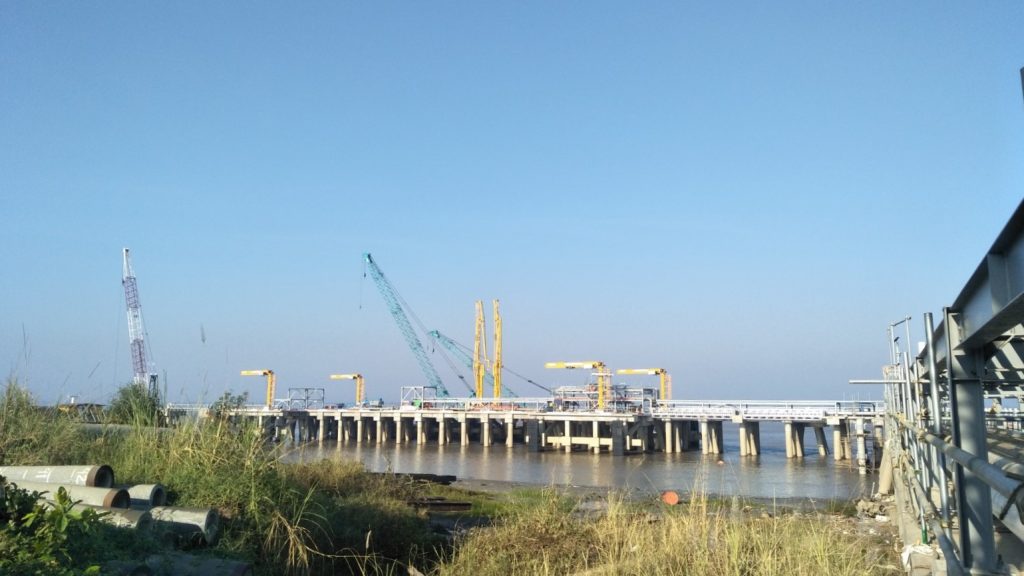
The four units of the explosion-proof slewing jibs are finally installed by personnel from our partner Rotary Engineering under the supervision of Rotomatik (S) Pte Ltd and/or Future Gift International in Feb 2020 with the skilled labour from Rotary Engineering
The entire logistics operation required a lot of coordination between the many parties including the authorities of Port of Thilawa from the moment the cargo is shipped from Rotomatik’s factory to the Thilawa Port, a river port 25km south of Yangon.
Upon reaching the port, gigantic barge cranes were used to offload and installed the slewing jib cranes on the jetty. Test loads were provided as part of the commissioning process.
The slewing jibs unique with three main features:
- The jibs are designed for hazardous area Zone 1.
- The jibs are designed to withstand high wind loads.
- The jibs are designed for earthquakes.
Since the area is used for O&G activities, the hoists and all electrical equipment must be ex-proof designed.
Where the port is located, the area is subject to natural disasters such as cyclones, earthquakes and others.
 Towering at 8.2m, such tall structures in open areas are subject to strong winds. Using past data, the slewing jibs are designed to withstand a wind loading of 54 m/s or 194 km/h.
Towering at 8.2m, such tall structures in open areas are subject to strong winds. Using past data, the slewing jibs are designed to withstand a wind loading of 54 m/s or 194 km/h.
Myanmar rests on one of the world’s two main earthquake belts, with one of its many fault lines running north to south placing Yangon and Port Thilawa at risk. Hence, the design of the slewing jibs take into the account an earthquake resistant design factor of 0.2g.
When one approaches the Port Thilawa, one cannot help but wonder at the four bright yellow structures against the Myanmar skyline, signalling the continuing development of Myanmar.
Rotomatik (S) Pte Ltd appreciates the close partnership with Rotary Engineering Pte Ltd and Future Gift International.


 The company has decided to keep the old crane nameplate as a testimony of its development and historical legacy over the years.
The company has decided to keep the old crane nameplate as a testimony of its development and historical legacy over the years.